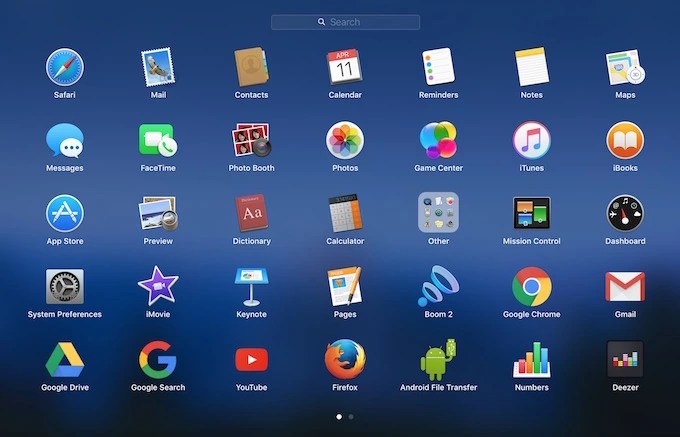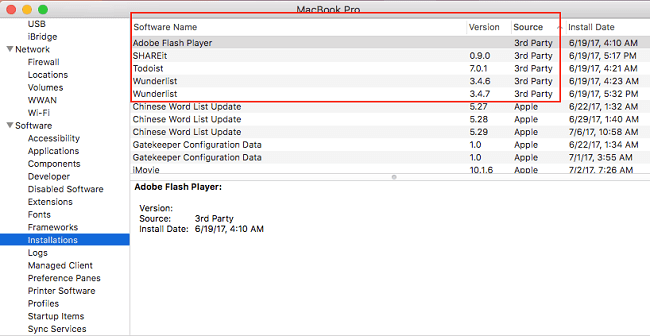Exit the program you want to delete.; Open the Applications folder, which you'll find by opening a new window in the Finder, or clicking on the hard disk icon.; Drag the icon of the program you want to uninstall to the Trash. One of the best things about a Mac is the range of free apps that come pre-installed. However, that doesn’t mean you won’t download and install other applications from time to time. It should be easy — like most Apple tasks — but that isn’t always the case. This post explains what you can do if your Mac won’t install apps.
How to find the Applications folder on a Mac? It is relatively straightforward.
Either to go the top-level Finder menu, then along to the Go dropdown.
Scroll down and click on Applications. This should open a folder containing the files and shortcuts of every app you’ve ever downloaded or own/use by default.
Other ways to access the folder include running a Spotlight or Siri search, or accessing it using any keyboard or mousepad shortcuts you've got in place.
Now, within this folder, you should be able to find every app you’ve ever downloaded. Only native macOS apps can’t be removed. But everything else is easy to delete. If your Mac isn’t performing as good as it once did, take the time to go through and drag into Trash anything that is taking up space you’d prefer to reassign to something else.
Find your Application folder via Launchpad
There are two kinds of Mac users: one kind prefer Finder, others trust in Launchpad. Launchpad is a classic Mac feature and is worth praise for its looks alone. You can find and delete your apps right from there.
Launchpad trick: Can you make your apps dance?
When you click on the Launchpad icon in the Dock you will see your apps and your widgets.
Hold the Command key and click on any app — the apps will start shaking
Click on the hovering [X] to delete any app you want
How to find hidden Applications
As a matter of fact, some of your apps don't show up in either Finder or Launchpad. Such apps could be small supporting programs or intentionally stealth software. But as the saying goes, there's no lock without a key. There are tools to see your hidden apps and folder and some are even free to download, like CleanMyMac X by MacPaw.
This highly popular tool comes with a tool called 'Space Lens.' This is another way to find your Applications folder if you don't like browsing the Finder. With its help, you can visualize your entire storage and uncover all your files and folders.
- Download CleanMyMac X (get it for free here) and launch the app.
- Choose Space Lens.
- Click Run to build your storage map.
- Choose Applications folder.
Mac Search For App
Occasionally, a Mac user can lose or misplace a folder from where it was situated in the Finder sidebar - and some will also place this folder in the Dock. Here is how you can put the folder back where it belongs.
How to restore a missing Applications folder?
- Go to the Finder menu.
- Select Preferences.
- Choose the Sidebar tab within Preferences.
- Re-check the option to show Applications in the Finder Sidebar.
- Now it should show up again in the Finder Sidebar and Dock.
With access restored, it should be easier to manage the applications you need - and those you don't - in your Mac.
I hope you find this article useful. Thanks for reading!
How to find and list all applications that exist in Mac computer storage?
In certain situations, you may need to know the number and type of applications installed on a Mac computer. This could be to check for malicious applications that are sometimes bundled with other software, or to list existing apps that might be occupying excessive storage space. If you have recently acquired a Mac, you may wish to know information about existing applications and this guide can help. Furthermore, if you are a keen or enthusiastic user, you can also manually check versions of installed software.
There are a number of ways to check all existing applications on the Mac as detailed here. The methods work with all versions of the Mac operating system. With the guidance offered, you can easily perform the checks. We start with simple methods, and then move to more advanced ones, which should present no problems if you carefully follow the steps within the guide. For example, we start with those requiring the least knowledge with Finder, and then walk through using Terminal and printing results into a text-based file on the desktop.
Mac Find Applications
Table of Contents:
It is recommended to run a free scan with Malwarebytes - a tool to detect malware and fix computer errors. You will need to purchase the full version to remove infections and eliminate computer errors. Free trial available.
Check installed apps via Finder
This is the easiest method, however, it also displays the least results: app names, date/time last modified, and size occupied on internal storage. Simply launch Finder and select the Applications folder from the left sidebar. Alternatively, press the keyboard shortcut of Shift, Command, and A. This will display all apps that were added through Mac App Store, came together with the operating system, installed through package managers, and manually attached by users via the drag-and-drop method. All user-level applications are included - enabling list view will allow you to freely scroll through existing apps.
Alternatively, Launchpad also serves to list applications and is one of the easiest way to locate apps for novice users. Note, however, that the Application folder is generally more useful for regular users. Furthermore, this method can be used to generate a list of all existing apps within a text-based file simply using a few keyboard shortcuts. In the applications folder, press the combination of Command and A to select all items within the window. Then press Command and C to copy the selection. Launch the TextEdit application using Spotlight - press the combination of Command and Spacebar, and then type TextEdit. In the text-based window, click on Edit in the menu bar at top of the screen, and then select Paste and Match Style.
You can save and rename this file. The applications folder can help you to determine which apps you might force to close, without crashing the operating system. You can also delete software directly from this folder. Detailed information can be found in this article.
Inspect the applications list through System Information
In you need more detailed information about each app stored on the computer, including system software, a more advanced method is available. This is simply a system report, and so you can use this option without fear of damaging the system, corrupting files, and so on. Therefore, you will not be able to delete or disable applications listed within the System Report. To access the information, hold down the Option (Alt) key on the keyboard and click the Apple logo in the menu bar at top of the screen. Then select System Information. In the new window, click on Applications under Software in the left sidebar. In the main area of window, you will see a list of all existing apps and additional information, such as version, source, where the app was obtained, and date/time of last modification. Clicking individual items in the list will display location in storage, information about the developer, and basic information expressed as a 'Get Info' string. User-level apps are displayed and also those necessary for system functions. Therefore, we strongly recommend that you do not delete or modify applications from this list, unless you are an advanced user (otherwise this could result in an operating system crash or making your computer inaccessible).

Find all application using Terminal

One of the most efficient methods to find app information is via the built-in command line application called Terminal. This, however, does require some advanced knowledge. Using this app, you can access useful functions, ignoring restrictions and even protected folders. To list all existing applications, you can use the find function, sudo command, which will grant access to all user and system folders. Launch Terminal using Spotlight - press the keyboard shortcut of Command and Spacebar, type Terminal, and then press Return. Alternatively, go to the Utilities folder under Applications. Once the application has launched, type the following command and press return to execute it (you will be asked to enter the administrators password, since you are trying to grant super user permissions):
- sudo find / -iname *.app
Since there are many files using the .app extension within the Mac operating system, displaying all them within a Terminal window might force the app and/or your computer to freeze. Therefore, as an alternative, we recommend that you print the results into a text-based file using the following command:
- sudo find / -iname *.app > ~/Desktop/ListAppFiles.txt

Using this syntax, all files that contain the .app extension will be written into the text-based file stored on the Desktop. You will also be able to find the location of those apps. This is probably the best option if you wish to check storage for possible malicious software - within the text file, you can use the Find function by clicking on Edit in the menu bar at top of the screen and selecting Find.